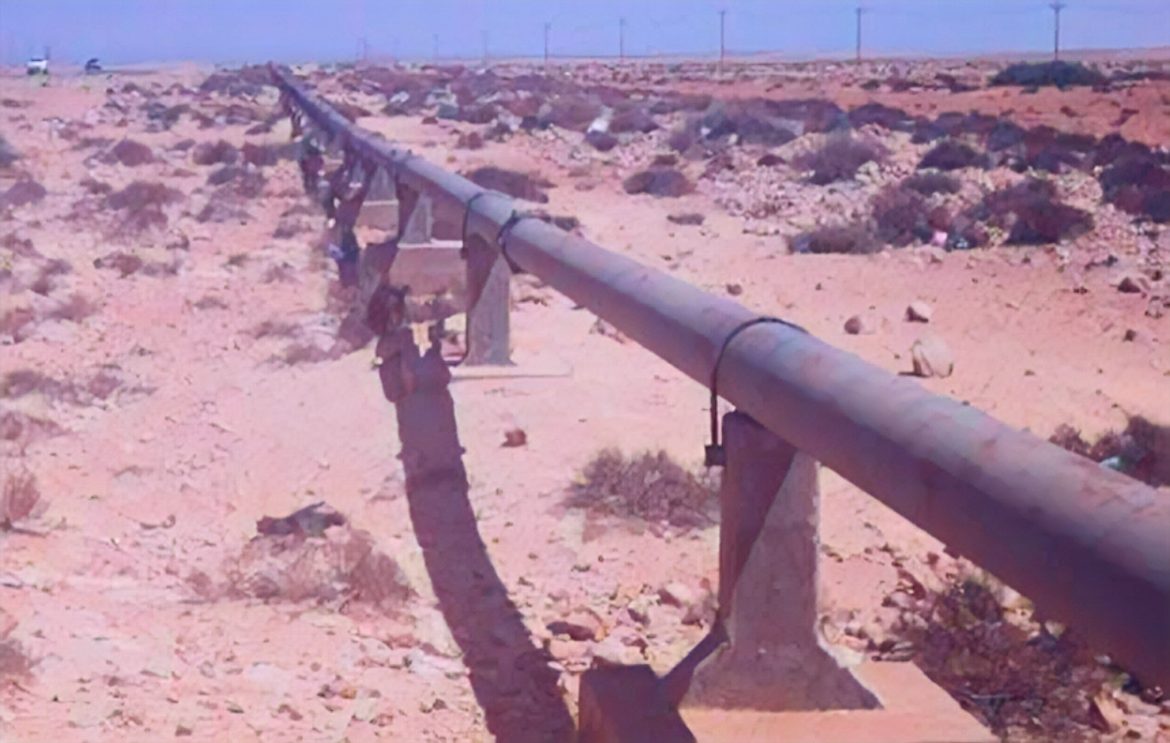KEY POINTS
- A major oil leak forced Libya to shut down a pipeline near Zawiya, halting crude flow from the Hamada fields and prompting environmental cleanup efforts.
- The incident highlights vulnerabilities in Libya’s oil infrastructure, exacerbated by years of conflict, underinvestment, and political instability.
- Delays in repairs could disrupt Libya’s fragile economic recovery and strain global oil markets amid ongoing OPEC+ supply constraints.
Libya’s National Oil Corporation (NOC) has confirmed the shutdown of a major pipeline south of the coastal city of Zawiya following a significant oil leak, prompting immediate concerns about supply disruptions and environmental impact.
Zawiya is home to the country’s largest functioning oil refinery, with a capacity of 120,000 barrels per day, making the incident a critical blow to national production and export activities.
The leak was detected over the weekend in a desert pipeline connected to the Hamada oilfields, one of the vital routes feeding crude oil to the Zawiya refinery. Visual evidence posted by the NOC showed a stream of crude oil seeping into the desert sands, prompting urgent containment and recovery efforts.
Decades of conflict and neglect fuel infrastructure vulnerabilities
“In parallel with the maintenance work, a team of specialists is conducting an investigation to determine the causes of the leak,” the NOC said in a statement. “Arrangements and coordination are also underway to recover the leaked oil and address any resulting environmental pollution.”
The Zawiya refinery, located just 40 kilometers west of Tripoli, plays a central role in Libya’s oil infrastructure. It is linked to the 300,000-barrels-per-day Sharara oilfield, one of the largest in the country. Any disruption in its operations could ripple across Libya’s oil exports, a sector that accounts for more than 95% of government revenue.
Zawya reports that while the NOC has not specified the volume of oil lost or a timeline for resumption, energy analysts warn that the shutdown underscores the vulnerability of Libya’s oil infrastructure, much of which remains under-maintained due to years of conflict, political instability, and underinvestment.
“This incident highlights the ongoing operational risks in Libya’s oil sector,” said Ali Hadad, an energy policy consultant in Tunis. “Aging infrastructure, lack of regulatory oversight, and sabotage threats have all made the industry fragile despite its enormous potential.”
Libya’s oil production has been recovering slowly over the past two years after a series of blockades, civil unrest, and governance disputes between rival administrations in the east and west of the country. In recent months, the NOC has taken steps to stabilize operations and attract foreign investment, including announcing plans for new exploration bidding rounds by the end of 2025.
However, incidents like the Zawiya pipeline leak threaten to undo these efforts. Environmental advocates are also voicing alarm, citing Libya’s poor record of ecological remediation in past oil spills. The desert leak may not only affect the soil and water table but also jeopardize local livelihoods dependent on agriculture and grazing.
The NOC has pledged to ensure full transparency in its investigation and to work closely with local authorities and international partners to contain any long-term consequences.
As Libya continues to rely heavily on oil revenue for economic survival, ensuring the integrity of its infrastructure remains paramount. Observers now wait to see whether the incident will accelerate overdue reforms in pipeline monitoring, maintenance, and investment—reforms many argue are long past due.



